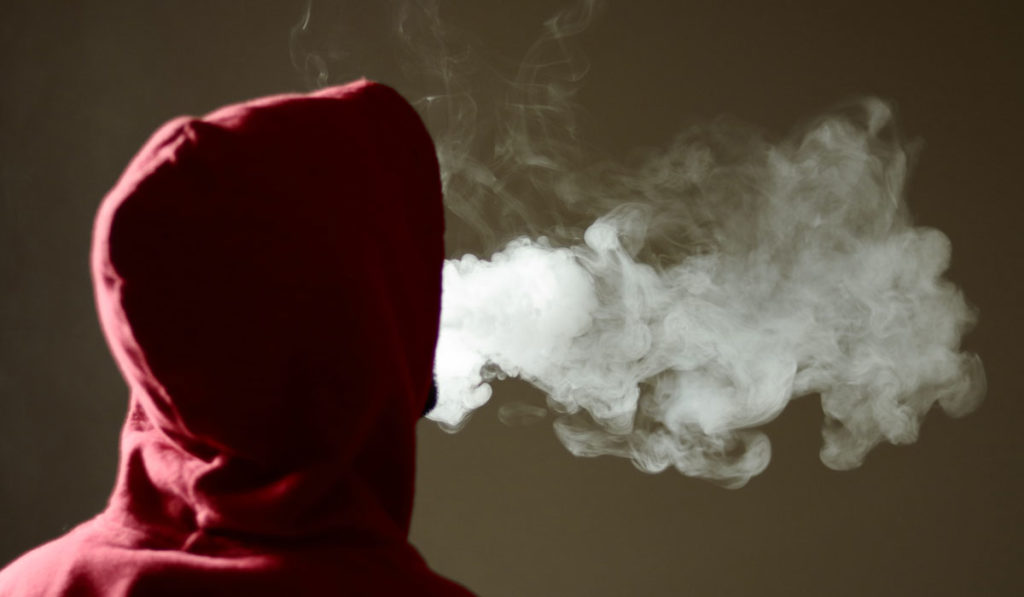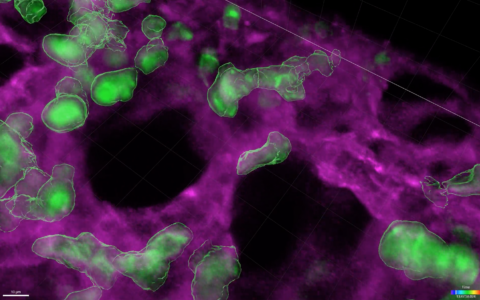While the world’s attention pivoted to COVID-19 in early 2020, a vaping crisis that had emerged among youth in the previous months continued unabated and largely unnoticed.
Now, more than two years later, less data on the impact of e-cigarette or vaping product-associated lung injury (EVALI) is captured than it was pre-pandemic.
“In the fall and winter of 2019, ED visits associated with an e-cigarette-associated lung injury had been dominating the headlines, but COVID’s arrival changed all that,” said Jacob Kaslow, M.D., a pediatric pulmonologist at Monroe Carell Jr. Children’s Hospital at Vanderbilt.
Although millions of young people still vape tobacco and other substances, with some becoming seriously ill, solid, current EVALI data is unavailable because the CDC stopped collecting data on cases in February 2020. “It stopped in part because of a significant drop in EVALI cases between September 2019 and early 2020,” Kaslow said. “Also, CDC resources were being stretched thin by demands due to COVID.”
By mid-January 2020, 2,668 EVALI cases had been reported to the CDC, which began keeping records in August 2019. Fifteen percent of hospitalizations were in children under 18 years old; and 37 percent in young adults ages 18 to 24.
Kaslow says Vanderbilt has seen about 30 suspected or confirmed cases in teens and young adults in the last two years; some with severe pneumonia, lung collapse or respiratory failure, requiring mechanical ventilation and life-support in intensive care.
“Growing evidence also points towards the involvement of other organ systems, including burns to the throat and oral cavity, and even effects on the inner ear.”
Identifying EVALI Cases
The Vanderbilt University Medical Center pulmonology team remains on heightened alert for both pediatric and adult EVALI cases. Its researchers recently published a review of the current literature on pediatric EVALI in Pediatric Pulmonology. In the article they stressed that while most pediatric patients with EVALI present with nonspecific respiratory symptoms, some have no apparent respiratory symptoms upon diagnosis, according to case reports.
“In the fall and winter of 2019, ED visits associated with an e-cigarette-associated lung injury had been dominating the headlines, but COVID’s arrival changed all that.”
EVALI diagnoses have been complicated by the pandemic because many of its symptoms resemble COVID-19, influenza or bacterial pneumonia. These cases may become more dangerous or deadly when left untreated, explained Kaitlyn Works, M.D., an emergency physician at Vanderbilt.
“A patient with EVALI may have symptoms that vary and overlap with many illnesses, making it more difficult to diagnose. We now have a high index of suspicion for this disease when patients present to our ED with respiratory complaints.”
Realizing the Health Impact of Teen Vaping
While Kaslow says media coverage of vaping’s dangers has precipitated a slight decline in hospital admissions across all age groups, he fears that teen vaping hasn’t declined as much as expected. One analysis found that the prevalence of self-reported current e-cigarette use was 27.5 percent among high school students and 10.5 percent among middle schoolers. “My biggest concern is nicotine addiction,” he said. “We’re talking about the ‘never-smokers’ here.”
Kaslow adds that vaping is also associated with deregulation of certain genes, especially in the oral epithelial cells, and can increase a person’s susceptibility to respiratory infections.
“Growing evidence also points towards the involvement of other organ systems, including burns to the throat and oral cavity, and even effects on the inner ear.”
Whether teens are consuming nicotine or THC-containing products, the flavored liquid in the devices (the main attraction for young vapers) is often a combination of dangerous chemicals and may contain vitamin E acetate, a compound strongly linked to EVALI. The Vanderbilt pulmonology group has advocated for recent legislation to ban flavored liquids and to raise the smoking age to 21.
“We now have a high index of suspicion for this disease when patients present to our ED with respiratory complaints.”
“Lack of regulation hindered our early understanding of the health effects of the chemicals in e-cigarettes, as the composition of e-liquids can differ from company to company, and even flavor to flavor,” Kaslow said.
Facilitating Honest Conversation
It is common practice in medical history intake to ask teenagers and young adults about smoking and smoke exposure. Children’s Hospital does include questions about e-cigarette use to help care teams make informed management choices, particularly for infectious diseases.
“The use of e-cigarettes can make infections, including COVID, more severe because the body’s immune system is affected,” Kaslow said. “While some patients don’t want to admit to vaping, especially THC-related products, we approach the topic sensitively and encourage them to be truthful.”
Vanderbilt pediatric pulmonologists are conducting educational outreach to ED personnel, pediatricians and primary care physicians through the Cumberland Pediatric Foundation.







